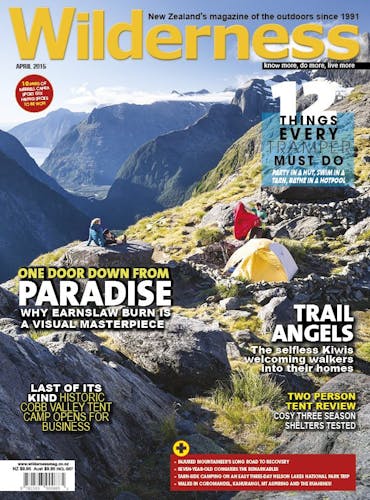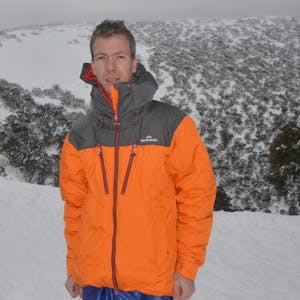You can’t really call yourself a tramper unless you’ve ticked all these off.
1. Do that last big tramp NOW
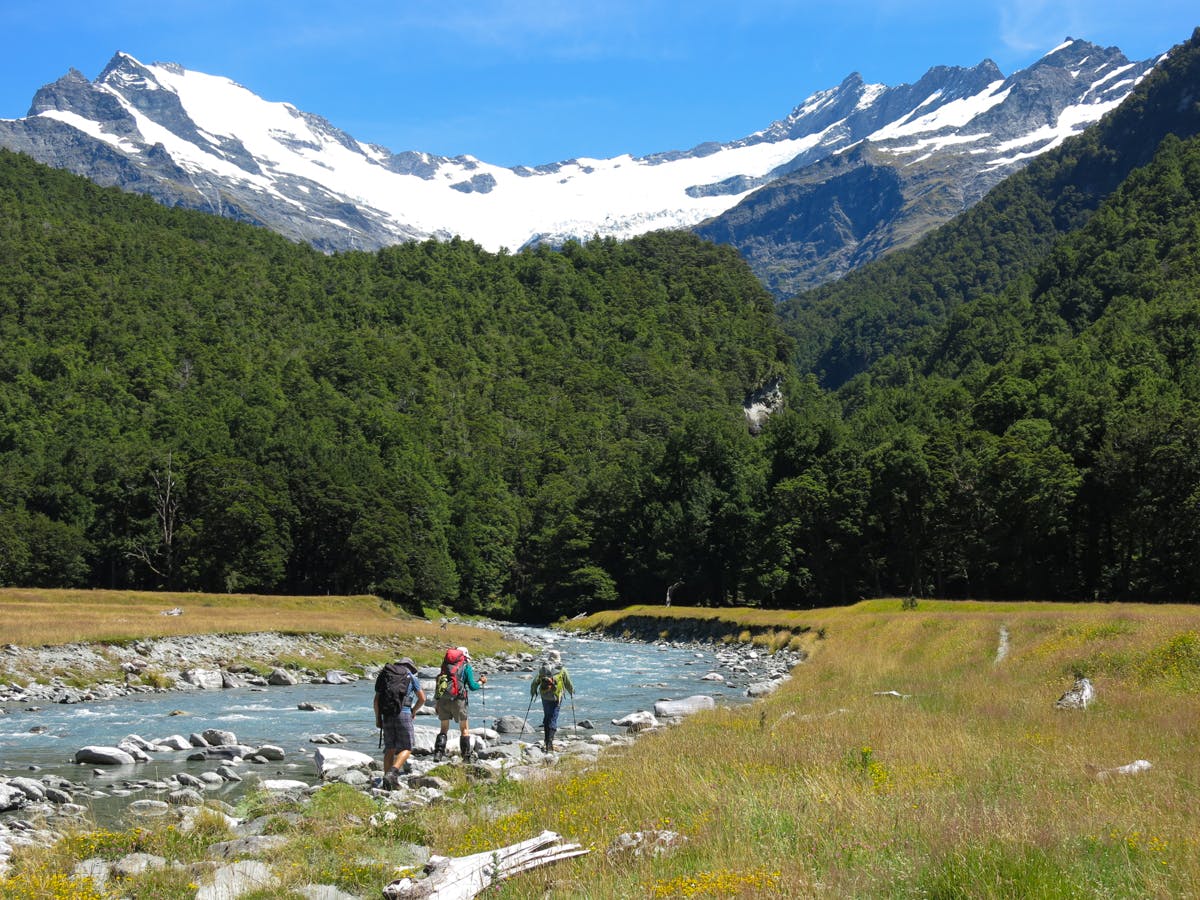
Don’t delay doing that big tramp – you’ll never be as fit and strong as you are now. Photo: Michelle Martin
Then do it again. There is a tendency to cop out of challenging tramps because you think ’I’m not as young as I used to be, I might not handle it.’ Well, I’ve got news for you. You’ll never be as young and fit as you are now. Tramping’s greatest gift is that it’s a gift that lasts a lifetime. When I want a trip report about a long, difficult tramp I’ll more often than not read one by trampers in the over 60 bracket. As we get older, we are less surprised by hardships and more in-tune with stoicism. Plodding is good for the soul, and the bush doesn’t discriminate against anyone. You are probably fitter than you think.
2. Introduce someone to tramping
Sharing a passion with someone is one of life’s big rewards. Helping someone see the world through your own eyes is better achieved by grabbing them by the hand and leading them there, rather than wearing them down with rhetoric. And because tramping is such a visceral experience, you really do have to take whatever stubborn bull is in front of you by its horns.
Most trampers I know, including myself, began by being sceptical about the sport. Did I want to be dragged along on a four-day Matemateaonga trip by my parents? Hell no. It was only the jet boat ride at the end that sold it for me. Adults may be more problematic, but few people are staunchly anti-tramping. Most are at least what I call tramping-curious. So whatever you do don’t make their first tramp hell!
It’s a big responsibility, yet both you and the newbie will get a kick out of the achievement. Tramping is all about appreciating small rewards: a cheese cracker, a change of socks, a warm beverage, a comely view, a good lie down; that you’ll hardly notice the warm glow you have is caused not from the cup of tea but from your previously hesitant companion, now sitting contentedly gazing at that great fire, or the impossibly steep ridge you just ascended, glad they came. A guaranteed ticket to heaven.
3. Swim in a tarn
There’s something primal and pure about feeling the icy lick of mountain wind on your body as you dunk your sweaty, quivering flesh in the equally icy water. It affirms the reasons you are tramping in the first place: simplicity, freedom, shaking off unnecessary gadgets, giving a chilly middle-finger to the crudities of city-living, releasing your inner clown, appreciating what nature has laid out in front of you.
4. Do an overseas tramp
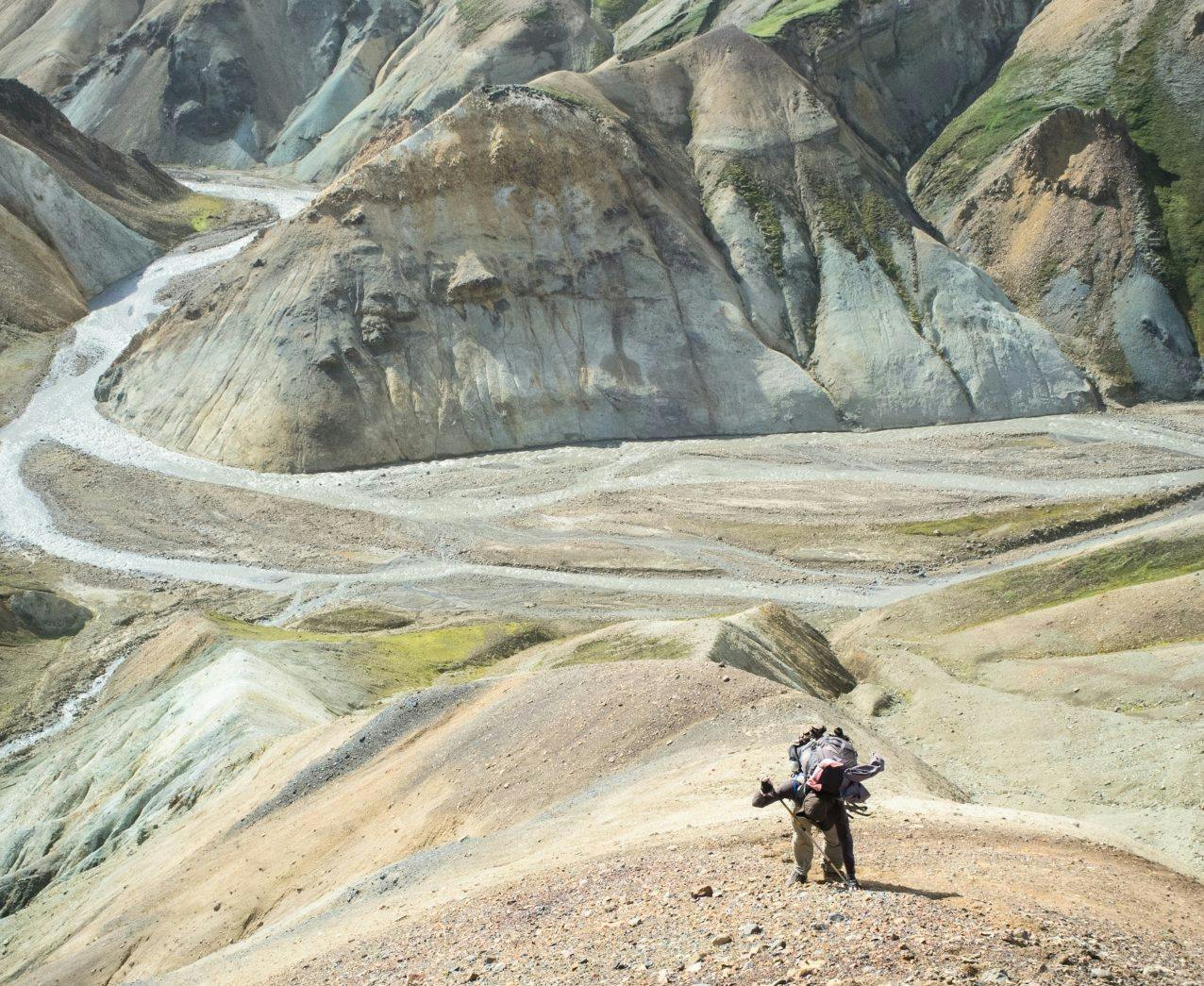
Tramping in places like Iceland can broaden your horizons – and make you appreciate New Zealand all the more. Photo:Dennis Radermacher
New Zealanders who have only ever tramped in New Zealand can develop notions of what tramping is, and how it’s done. It’s only by comparing it with an overseas experience that you can appreciate how good we have it, or what could improve. More often than not, it will be the former.
The comfort, abundance and functionality of huts (or the absence of all those) is the first thing you’ll notice on an overseas hike. Decent, easily-obtainable topographical maps may also be lacking, as well as reliable local knowledge.
Kiwis love giving overseas visitors advice about tramps, tracks and huts. When the boot’s on the other foot you might find that locals foster concern for your mental health when you mention tramping. On the plus side, you’ll see a whole new range of fauna, flora and landforms, experience different weather conditions and challenges.
Tramping forces you to concentrate on the land: your surroundings, your world. Doing this overseas is essentially entering a different world, and when you tramp again back home you’ll notice New Zealand icons you never knew were so unique.
5. Frame a tramp around hot pools
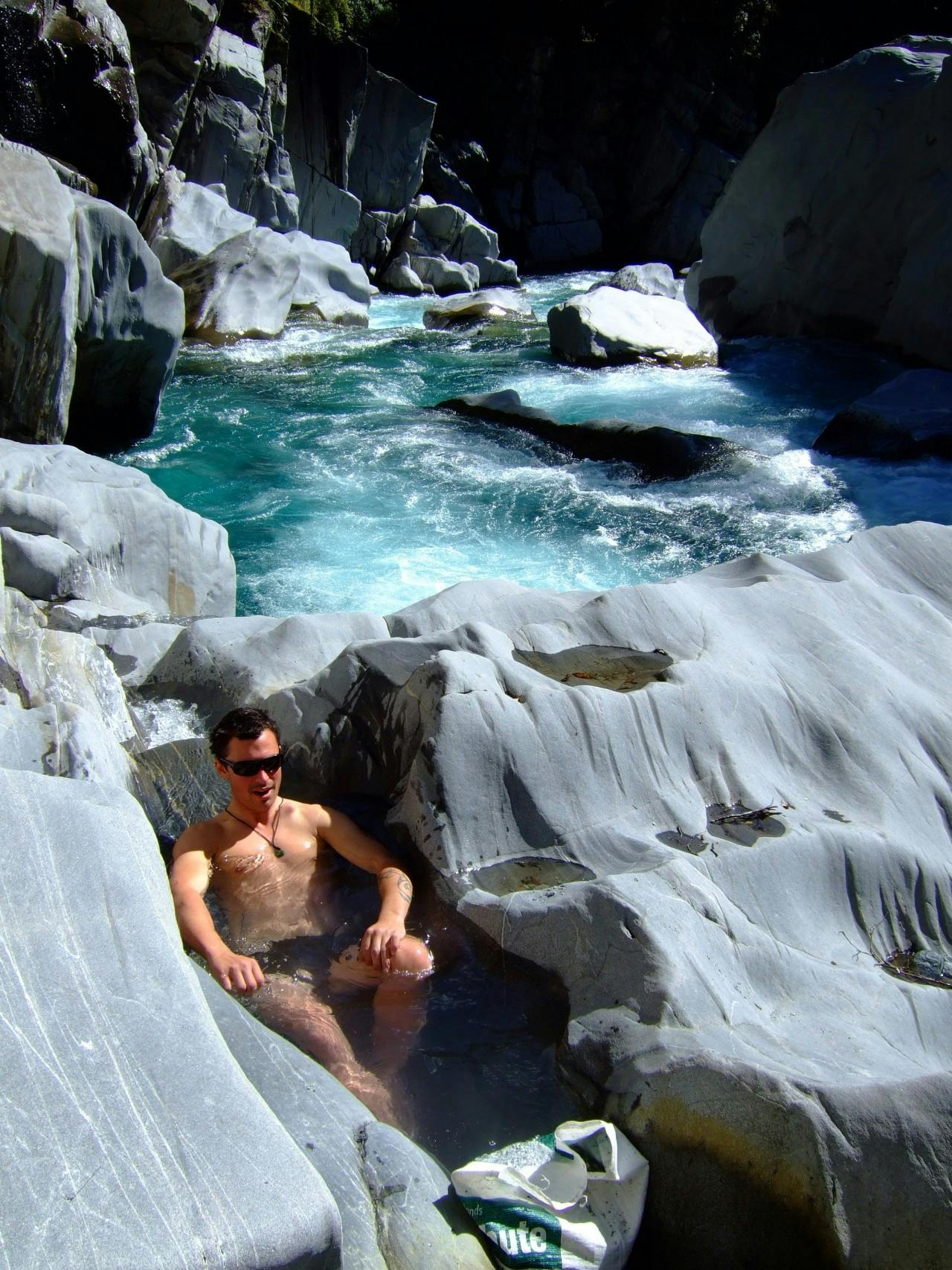
Soaking weary muscles in a hotpool, like this one on the Waitaha River, is one of life’s joys. Photo: Sally Jackson
If I were religious I would have no hesitation in offering profound worship to whichever deity claimed responsibility for creating hot pools in the bush.
They are the perfect counterpoint to a chilly climate, and the ultimate reward for a long day’s toil (or even a short day’s). There’s no feeling quite like sinking your sore body into the heated waters of a natural, outdoor thermal pool. You throw off the evil pack, strip off the sweaty clothes and make low groans as you lie back in an unfathomably warm river. Kids may reveal themselves to be an impediment to the serenity, but their games, incessant chatter and cheery, red faces are proof beyond all reasonable doubt of tip-top parenting.
6. Visit a wilderness area
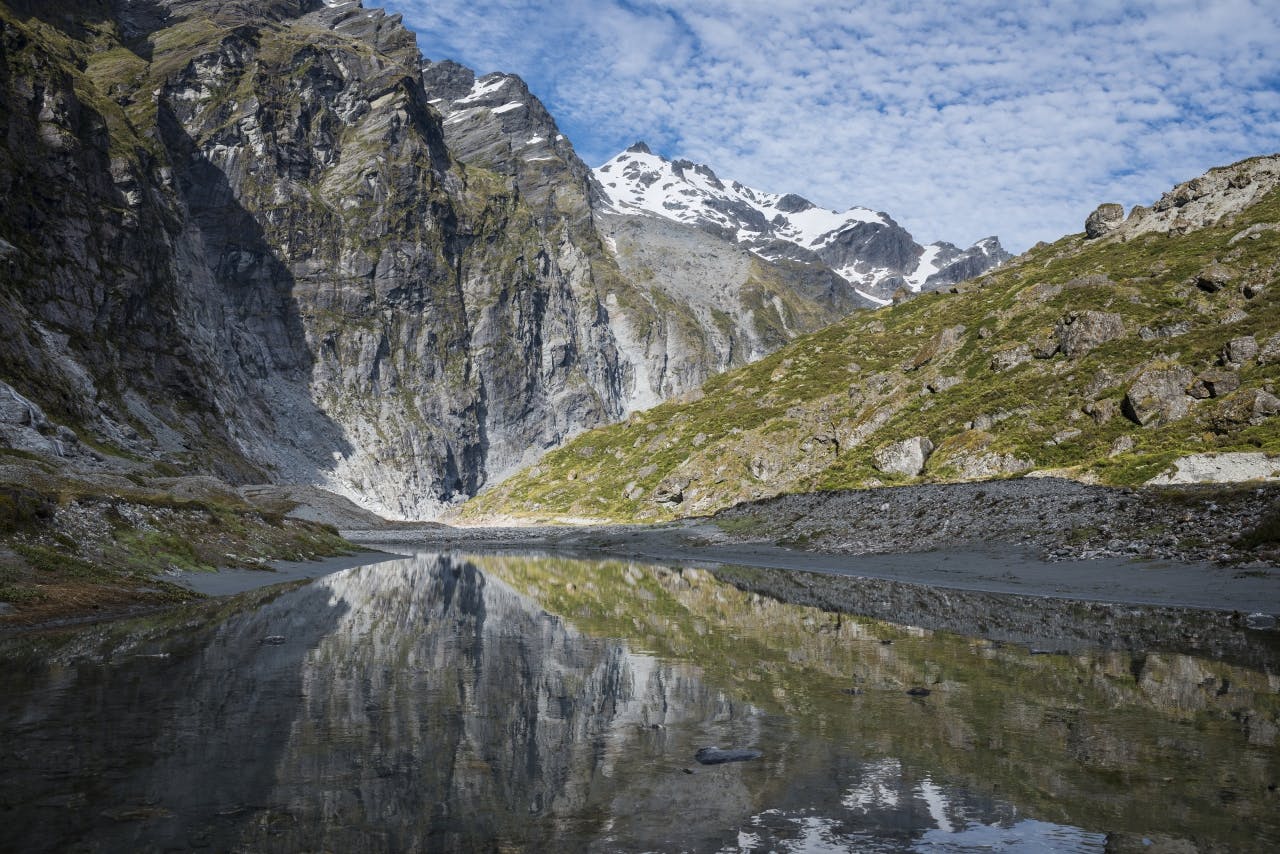
Remote, untracked and big – the Olivine Wilderness Area is an imposing, wild place. Photo: Rob Brown
Yes, having huts and tracks and little orange markers is lovely and all, but just once wouldn’t it be nice to visit an area totally devoid of any man-made intrusions?
It’s time to test your mettle, and also your tent, as you plunge into a remote Wilderness Area, of which New Zealand boasts some of the world’s finest. We’ve all had to follow a route along untracked tops at some point, but in a wilderness area everything is untracked. It’s living on and in the land at its most pure. It’s a true test of your navigation and route-finding skills. It’s being totally self-sufficient. It’s slightly crazy.
Wilderness Areas are, by definition, wild, but they are not without their softer side. The Olivine Wilderness Area in South-Westland is a formidable challenge, with impenetrable bush, swollen rivers and imposing ice-plateaus. But it also provides homely, inviting rock bivvies, that reveal themselves to be about the most welcoming accommodation you could ever wish to stumble upon, starving and bloody. Embellished with a fire, your mood can soar to euphoric heights in a matter of minutes.
You can feel insignificant in Wilderness Areas, overwhelmed by rampant, untamed nature. It’s a reminder that tramping is the ultimate exercise in making yourself small. It puts you in your place.
7. Volunteer and get involved
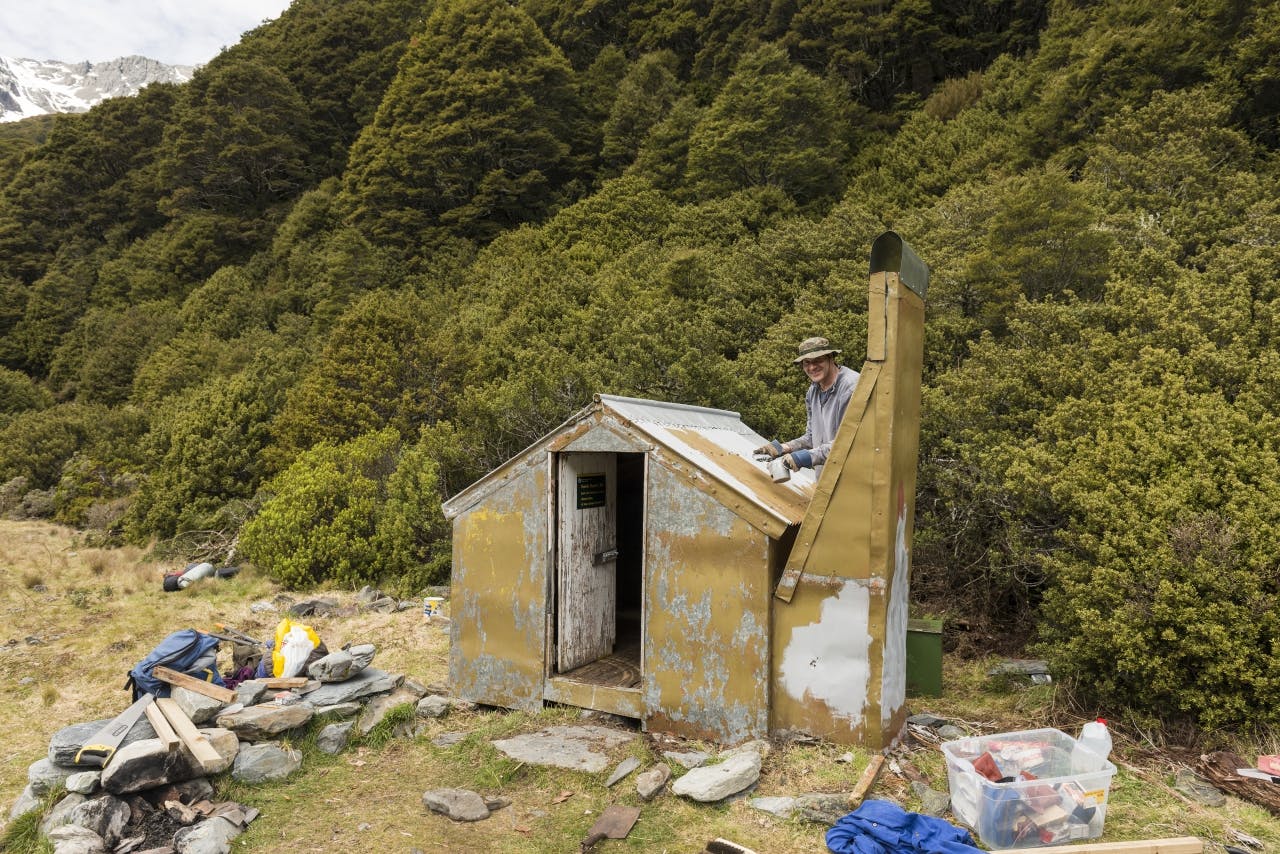
Helping with the upkeep of your favourite hut is a good way to ‘give back’. Photo: Rob Brown
It’s easy to take for granted the world-leading set-up we have for tramping here in New Zealand. But it doesn’t just happen. Getting involved by volunteering your time in the outdoors could just be the most rewarding move you ever make.
There are many ways to put your hand up: You could become a hut warden for a couple of weeks in the summer and spend the time teaching New Zealand’s backcountry heritage to overseas (and local) trampers, whilst keeping house at a fancy hut. You could take up a leadership role in a tramping club and lead parties on tramps, or perhaps manage the logistics or muck in with the upkeep of club huts. Joining or donating to groups such a Permolat is a fantastic way to give something back and ensure backcountry huts and tracks are maintained for the next generation.
Volunteering could also be as simple as helping to spread the word and foster an even wider awareness of tramping. You can do all this without leaving the house, by contributing to online discussions about tramping, keeping a blog or a tramping website, sharing information about routes and tips, writing letters to advocate for our common values, or even contributing to Wilderness by sending in your photos and stories.
8. Have a party in a hut
Looking for something a bit different for that special birthday that ends in a terrifying zero? Or perhaps an engagement party? A wedding, even. A classic New Zealand bush hut could be just the place to kick some life into jaded party patrons.
Sole-occupancy huts are perfect for booking out and ensuring your wild night doesn’t encroach on unsuspecting trampers. DOC provides many huts in the Rimutaka Forest Park that are suitable. The newest, Turere Lodge, can sleep 32 people and the fire gets so warm you’ll be opening the front door to let the heat out.
Most sole-occupancy huts are located close to road ends, meaning it’s not far to haul all manner of luxury items: celebratory beverages of course, but I’ve also seen portable speakers, flashing lights, a soda stream, your best clothes (why not bring the Ritz to the bush?) and delicious spreads more accustomed to a fine dining restaurant than a hut.
You’ll never look at a hut the same way once you see its potential as a party venue, and it’s a great way to introduce non-trampers to the joys of huts. Beware though, you may never want to go back to regular hut tramping, it’s a bit like going back to economy class after you’ve experienced first class.
9. Learn ice axe and crampon skills
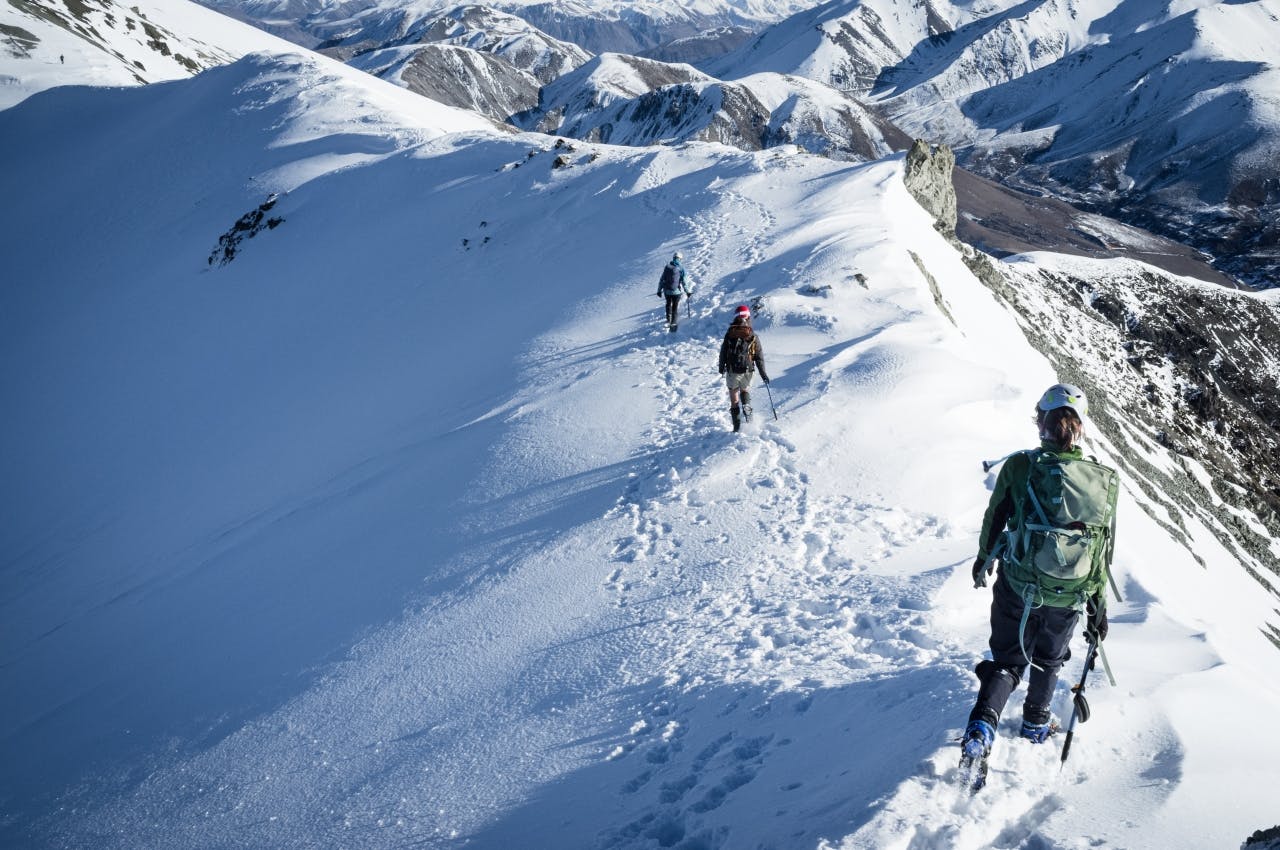
Learning basic ice axe and crampon skills will open a whole new world of outdoor possibilities. Photo: Dennis Radermacher
You don’t have to have lofty intentions of becoming an alpine climber to learn some basic mountaineering skills. It’s a shifting line between tramping and mountaineering sometimes, and things such as altitude, route conditions and the weather can blur these lines further.
Learning how to use an ice axe and crampons means a whole new world can be opened up to you. Suddenly you can cross that alpine pass or mountain face that would have been too dangerous in boots alone. You can venture into territory you never considered possible. You can practise your self-arrest and hope you never have to use it. There’s something immensely satisfying in plunging your spikes into the ice, swinging a sharp tool into the mountain and surging yourself forward.
Taking a course is a good way to enter this exciting new world.
10. Sleep out under the stars
The first time I tramped the main range of the Tararuas, we camped on the tops at the turn-off from the Southern Crossing route. We knocked off the climb from Otaki Forks on the Friday night, leaving Field Hut in our wake and pushed on up. Staying at Kime would have meant we would overshoot the turn-off, so an ingenious plan was devised to give us as much time as possible on the Main Range and ensure we arrived at Maungahuka Hut early enough to enjoy the promised sun.
It takes good weather to comfortably pull off a stunt like this, as Bridge Peak is totally exposed to the worst of it. Four of us, as well as my faithful dog, huddled under a couple of tent flies and watched the sun melt into the west, breathing warm, orange breath onto the South Island, Kapiti Island and Mt Taranaki. Distant lands glowed like embers then dissolved into the night as the stars took the stage. It was a sublime encore.
We wouldn’t be anywhere without huts, but a night outdoors means the barrier between you and the untamed night is broken down. Night gives you a completely new experience of the land. You’d be mad to turn your back to it.
11. Climb Mt Tapuae-o-Uenuku
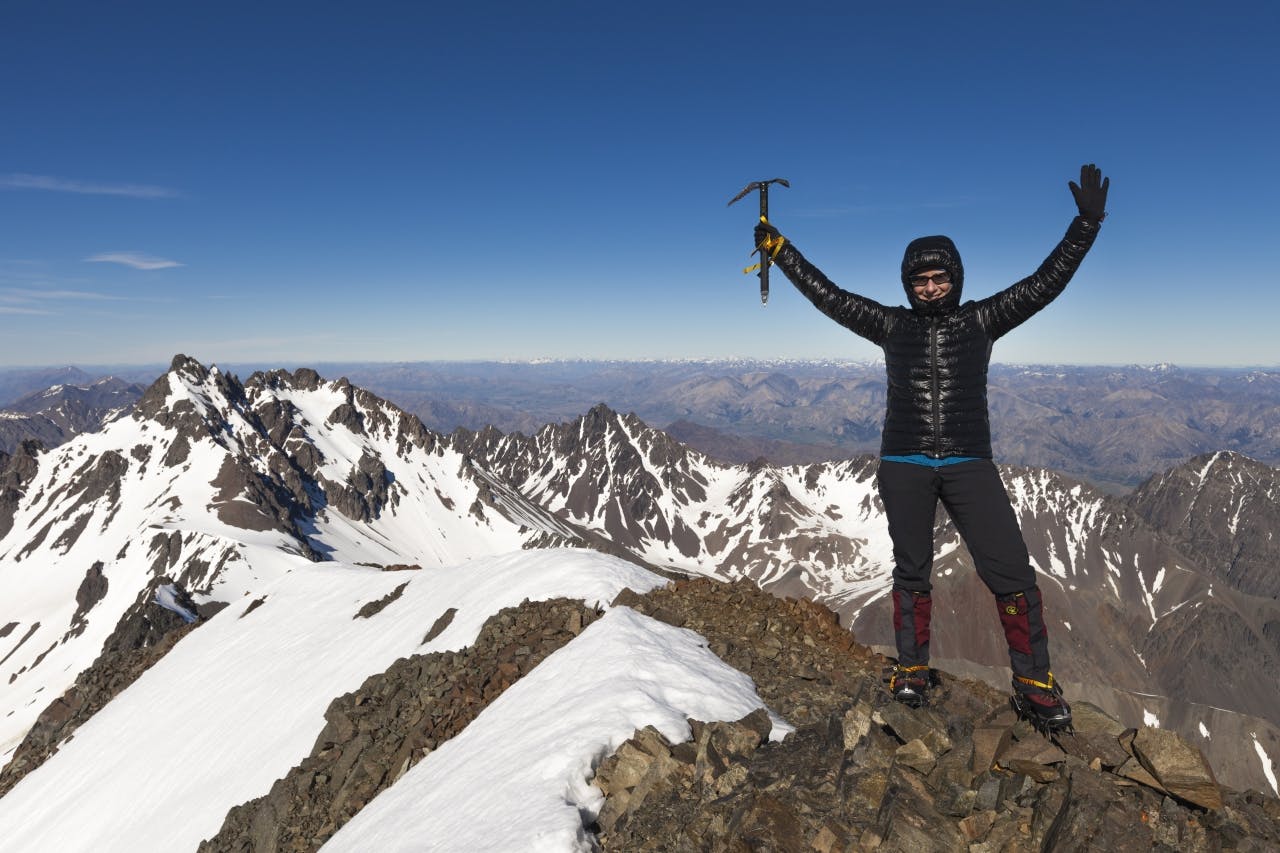
A real sense of achievement at climbing the highest mountain outside the Southern Alps. Photo: Mark Watson
Widely known as the first mountain climbed by Sir Edmund Hillary, Mt Tapuae-o-Uenuku is the highest mountain in New Zealand outside of the Southern Alps and a fantastic peak for trampers or novice climbers to bag. There’s a real sense of achievement when you make that last step onto the summit, particularly as it would have been the sole reason for your tamp.
Usually a tramp doesn’t have only one goal; it’s about enjoying all aspects of the walk. But once in a while it’s fun to pretend you’re mountaineers and go conquer a lofty but easily achievable peak.
In classic pioneering style, the tramp takes you up a river (the Hodder: warm in summer, freezing in winter) in the low country before you climb to Hodder Huts. Parties will usually stay there overnight then make the rock-scramble to the summit the next day, before returning to the huts for another night.
12. Tramp Stewart Island
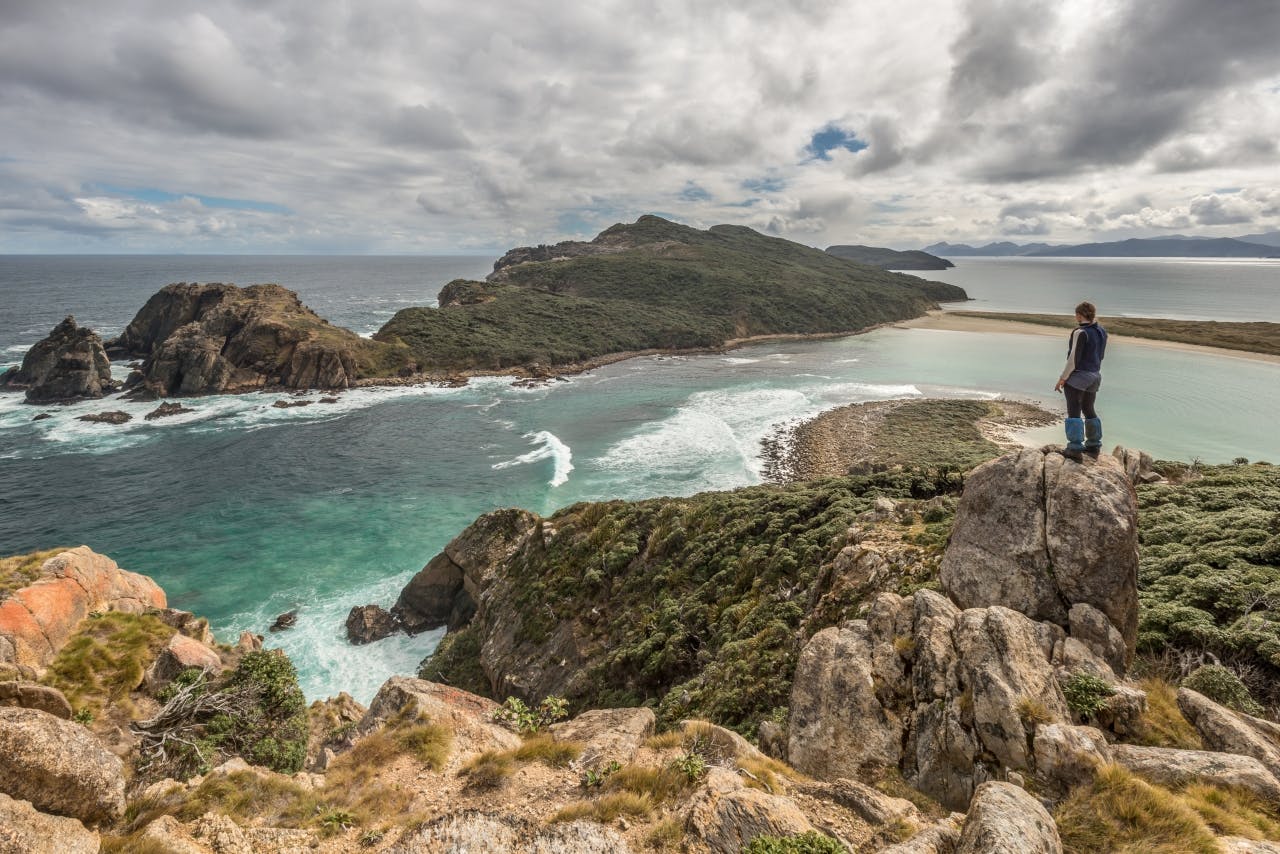
Stewart Island is renowned for its rough, muddy tracks. It’s also incredibly beautiful. Photo: Danilo Hegg
You won’t get a more isolated feeling than trudging along a lonely beach on an island at the bottom of the world. The mud, the bush, the cantankerous weather, the summer sun that seems to never set, the sense of freedom and self-sufficiency; Stewart Island has all that and more. It’s also your best chance of spotting a kiwi in the wild.
You can’t say you’ve tramped New Zealand until you’ve left the mainland and crossed the wild, unforgiving Foveaux Strait and landed on wild, unforgiving Stewart Island. You’ll more than likely want to do the 10-12 day North West Circuit, but even tougher challenges beckon. In the 1980s, Hokitika tramper Dave Wilson lived off the land for more than two months, fishing and being thrown choice cuts from hunters.
It’s a tough place, but it’ll also show you its beauty and tender side. Don’t leave it off your list.





